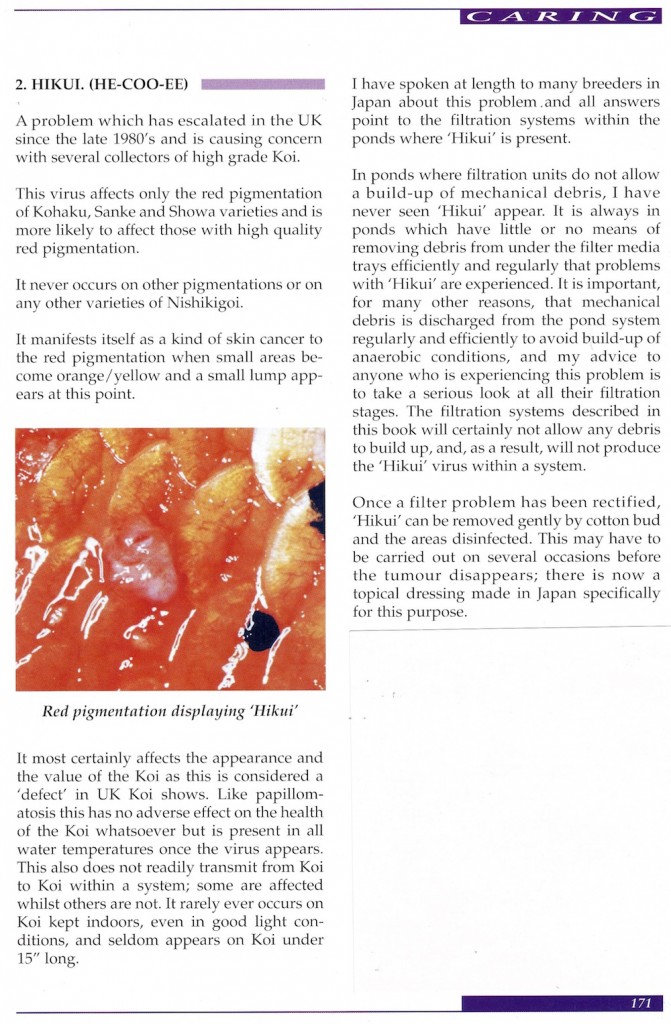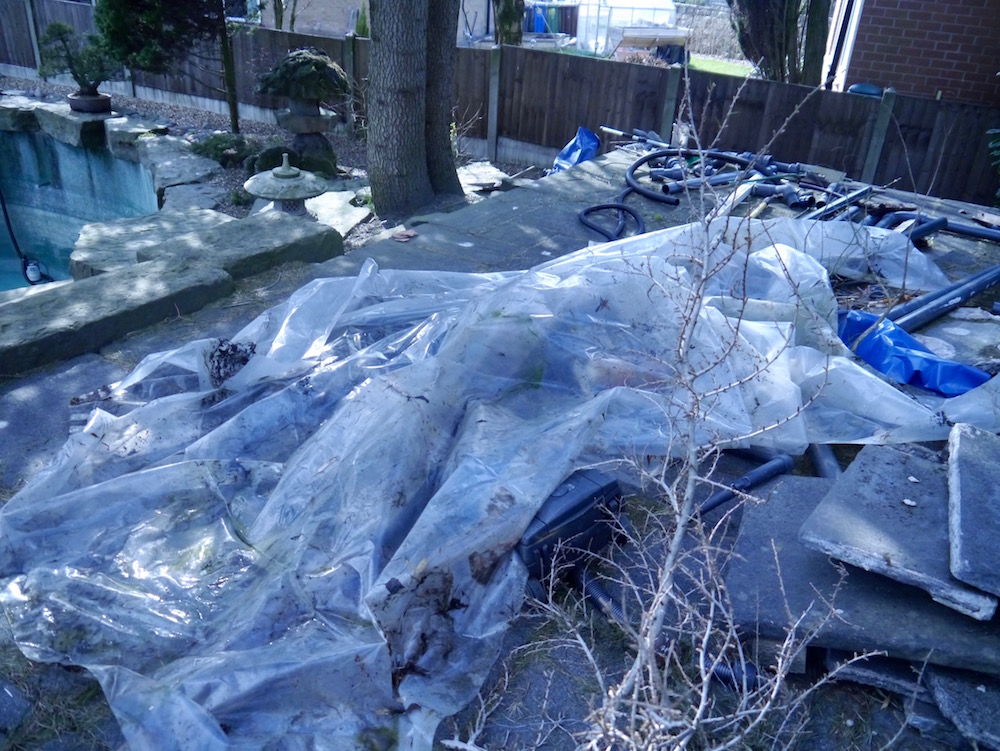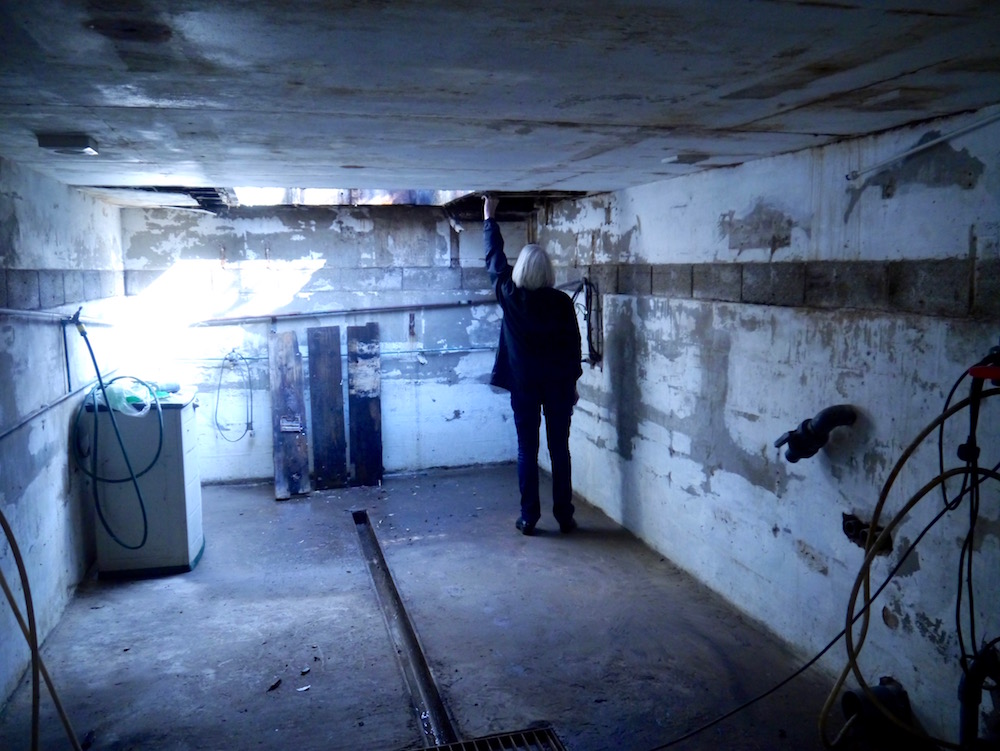Just a few details of the pond itself –
When excavation was completed, the base soil was tamped down with a whacker plate and a 6” deep concrete base was poured. After that, work stopped for a year or so – but there was no doubt that when work commenced again the base was solid!
Because the pond base is a ‘rough circle’, four bottom diffuser drains were placed at each quarter of the circle and the 4” lines from the four drains were taken towards the area where the filter house base was being built.
Air to the drain diffusers was supplied by large bore hose threaded through the pipes themselves – in those days there were no drains made with a separate 1” bore air feed.
On the original concrete base, the first few layers of solid concrete blocks started to form the walls of the pond and then the bottom drains and pipelines were covered with another 6” concrete base.
The walls were continued in sold concrete blocks to give wall thickness of 9” until we got to the level where a concrete collar needed to be built in order to support the boulders.
There are also three surface skimmers built into the pond walls.
After all this had been completed the entire internals of the pond were rendered with a 0.5” scratch coat followed by a 0.25” trowel finish.
Just to make triple-sure we had no leaks on the structure we gave the entire pond three coats of clear G4 resin before it was laminated with glass fibre.
The pond holds 17,500-gallons (75,000 litres) of water.
These next shots were taken in 2000; one year after the pond was started up for the first time – at that time the plants had not yet matured.


On the first shot you can see the steps and door that led into the filter house.
From 2000 to 2007 the pond was used to keep customer’s Koi they had bought from us whilst in Japan, most had to be rested for some time before packing them and shipping them to their overseas owners.
The electricity and gas costs used to keep the pond running, often brought tears to my eyes – but thankfully, all these were paid for by my company as a legitimate expense.
Many Koi clubs and private collectors came to see the set up and several of these commented that it was the best Koi pond they had ever seen.
‘Visually’ I had to agree with them – but there were many things in the system I would have liked to change.
For starters I had used 1.5” bore pipes for the water returns when 2” bore would have been so much better.
Maintenance of the system was a complete nightmare and it took two of my team a full two days to clean out the filters thoroughly on a monthly basis.
Reason for this was that only one of the four banks of filters could be emptied at a time and still leave the pumps on the other three banks running. In short – the vortex chambers I used held too much water and were also far too deep.
On top of all this, some Koi showed signs of Hikui and Shimi?

(This page is an excerpt from my book ‘Koi Kichi’ and describes the problem in detail).
By 2008 – because of all these problems and the ridiculous running costs involved I finally decided to close down the pond, fill the pond in and try and get the area back as a garden.
The pond was emptied and some friends came round to blitz the filter house; I sold some of the items and others were transported to the local tip.



I then started to get quotes from local companies to fill in the pond for me; some recommended a belt system from the driveway to the pond via the side of the house where hardcore could be used.
I read all the quotes and then decided to sleep on it.
Hilary was distraught with the thought of having to lose the pond.
More soon
Waddy 18/01/16.
